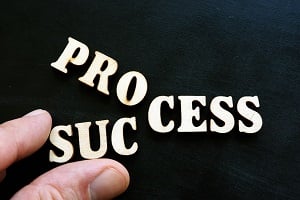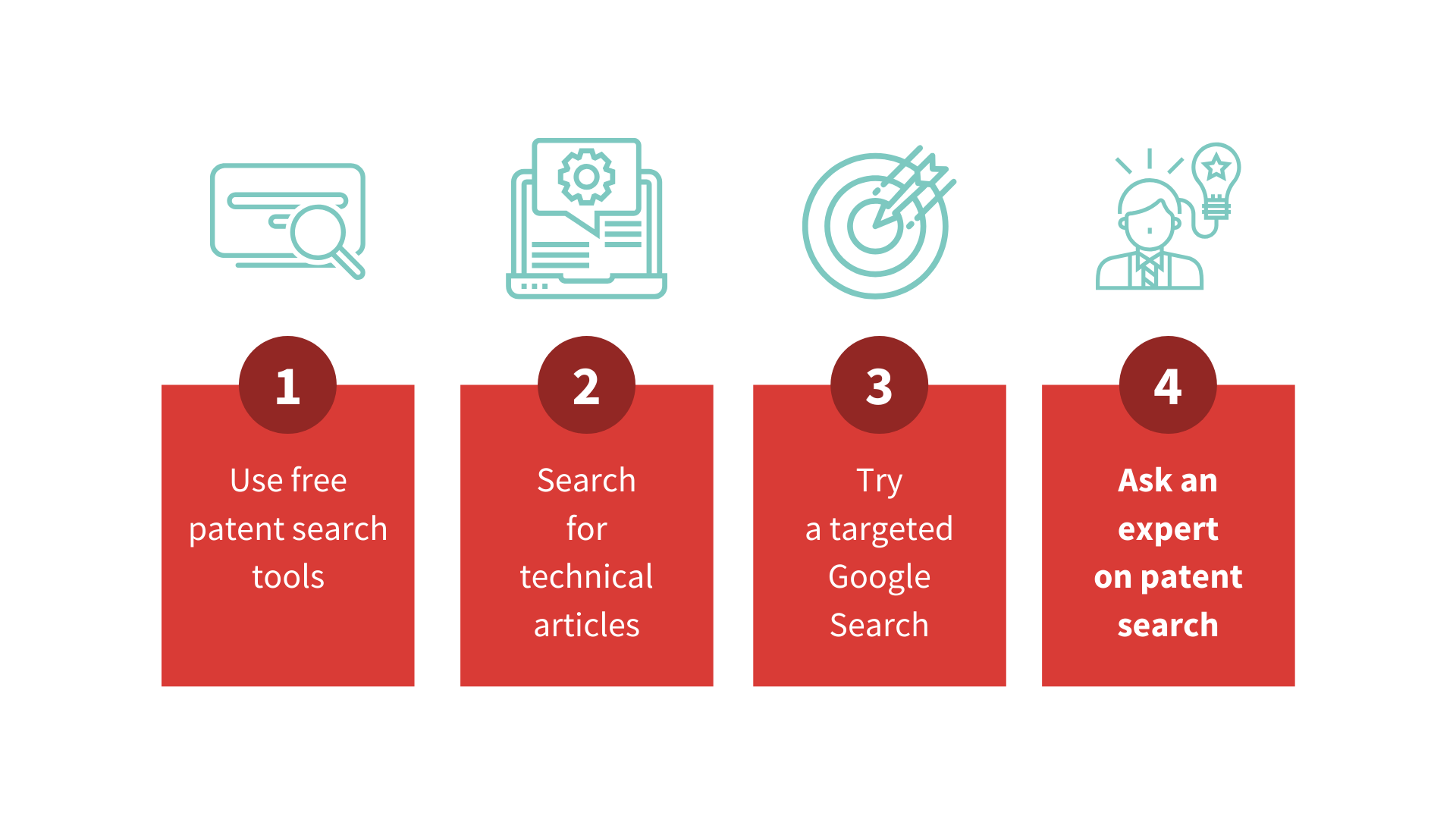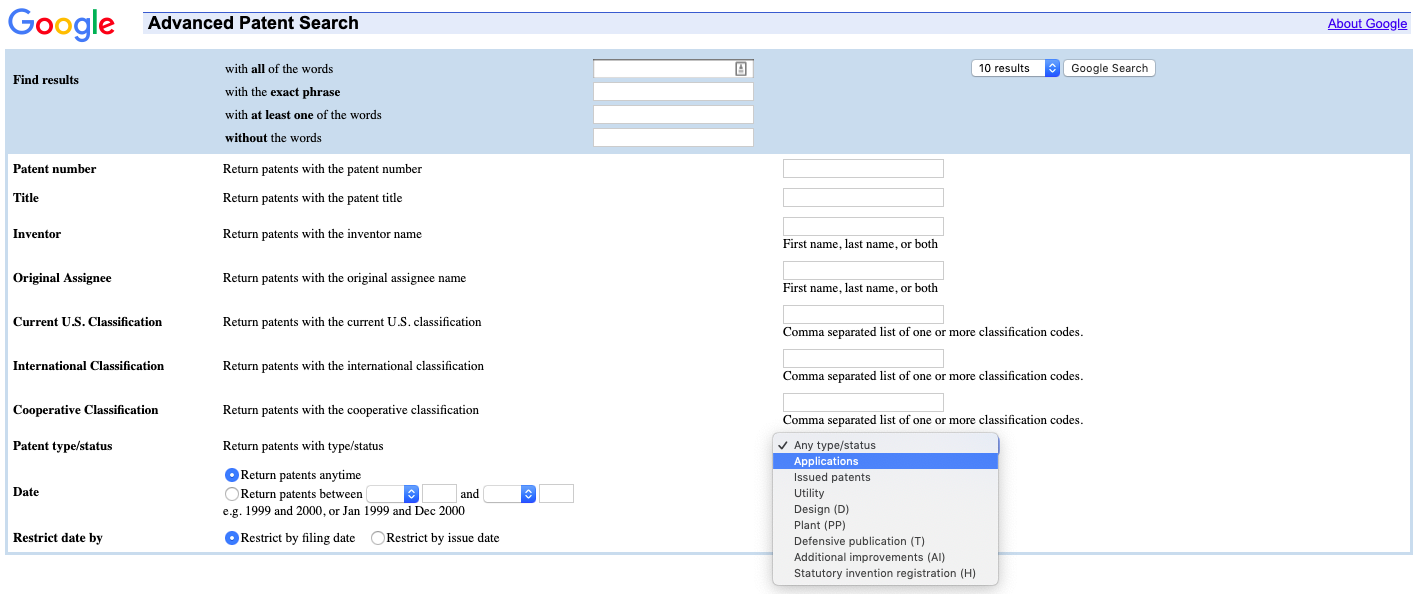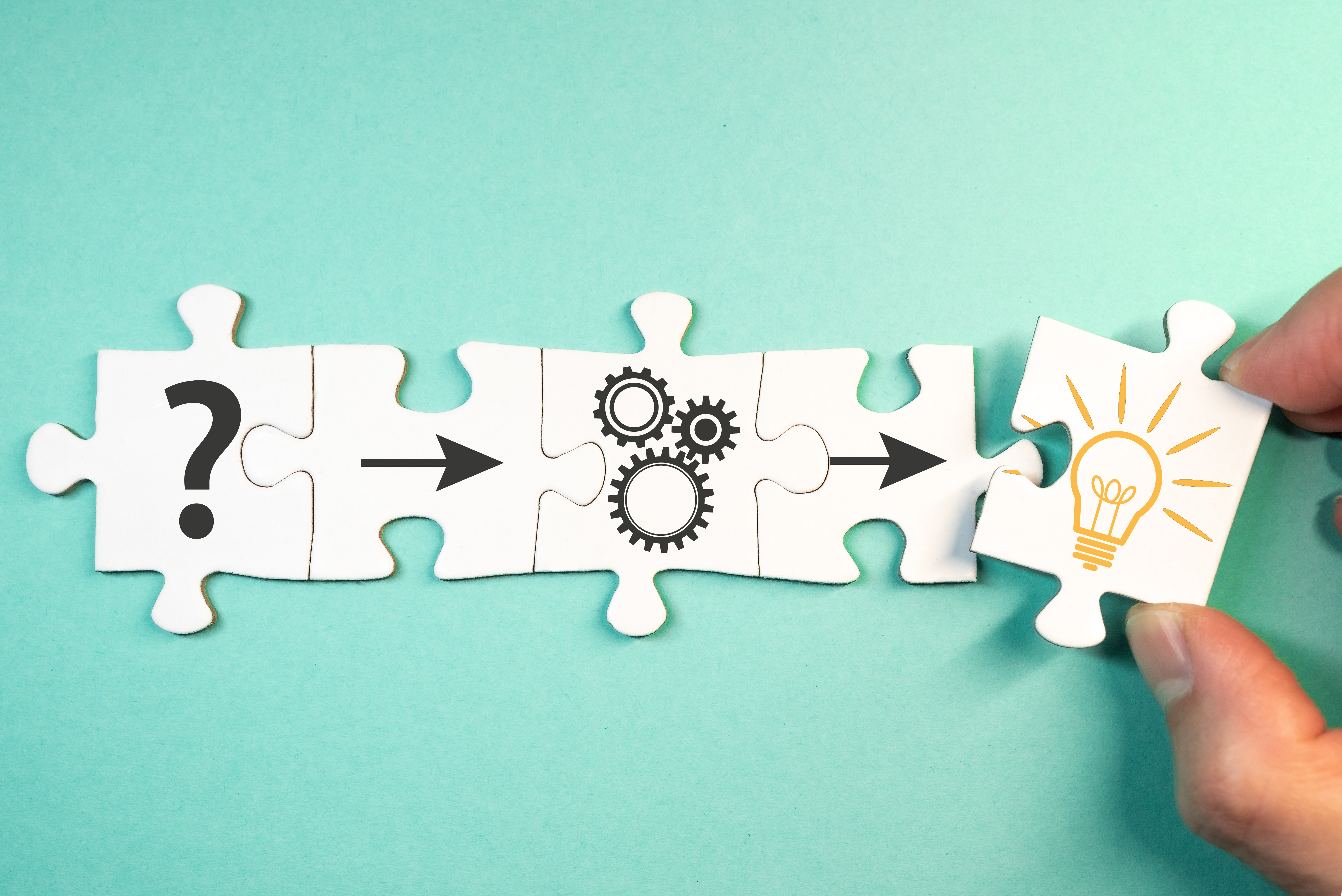Chapter 3

Complete transcript available here
STEP 1 - Define Your Idea
This is arguably the most important step. You have to define what makes your idea unique. Ask yourself, why is my idea patent-worthy?
We recommend following this simple process:
-
Take a moment and write down your idea using only a few sentences. How would you describe your idea to a potential customer? Does it make sense to someone who doesn’t have knowledge of the industry? These questions will help you clearly define your idea.
-
Does your idea stand out? You can only get a patent if your idea is completely novel and unique.
-
Does your idea need a patent? Find out if your idea falls into a patentable category. If not, perhaps it does qualify for another type of Intellectual Property protection, such as a trademark or a copyright.
-
Have you published no later than a year? In the US, your idea shouldn’t be published, or publicly available, for more than a year, otherwise, you aren’t eligible for a patent, not even a provisional. Time is literally money!
Define the details of your idea. This is where you can get into the nitty gritty details of your idea. This will come in handy when you eventually file for a Non-provisional (Utility) Patent application.
What is a utility patent?
A utility patent is a patent that protects the functions and features of a new or improved—and useful—technology.
A utility patent prohibits other individuals or companies from making, using, selling, offering for sale, importing, or exporting the invention without authorization. Most of the time, the word “patent” is a reference to a utility patent.
The United States Patent and Trademark Office (USPTO) issues utility patents.
There are several ways to file a utility patent application in the US:
-
Direct Filed Application: This is the first patent application related to this invention.
-
From a Provisional Application: You can file a provisional patent application before filing a utility patent application. You must file the utility patent application within one year of the original filing date.
-
From a Foreign Application: You can file a patent application directly with another country. Within one year, you can file with the USPTO.
-
As a Divisional or Continuation Application: Once you have filed a first utility patent application, you can file one or more additional utility applications, covering different aspects of your invention. You can only change the claims.
-
As a Continuation-in-Part (CIP) Application: In this case, you file a first utility patent application, and then add/change text or drawings for the CIP application.
-
As a National-Stage Application: After filing an international application under the Patent Cooperation Treaty (PCT), you enter the national stage of the application process by filing in the US.
Most of these different types of utility applications are available in other countries, except for the CIP application, which is the US only.
What is a software patent?
A software patent is an intellectual property right that protects the functions of a computer program. A software patent is considered to be a type of utility patent.
According to US law, the software is a patentable item, however, like any other invention, the software invention must meet certain criteria:
-
The invention falls into a patentable category. That means that the software has to be technical in nature. In some countries, this limits software patents to areas such as image processing, which are deeply technical. The US still permits business method software patents but is increasingly requiring them to focus on technology, rather than a business process.
-
The invention is new, unique, and not obvious to anyone with average skills in your industry.
-
The patent application is filled out in detail. All the information about the product meets the guidelines that the United States Patent and Trademark Office sets out.
If you have software that you would like to get a patent for, define your software’s most important functions. In other words, define what sets your idea apart from what is already known. With this detailed understanding, you and your patent agent can get the best protection possible for your software.
Ask yourself the following questions:
-
What is unique about my software?
-
What is my software's desired function?
-
How does the software handle information?
-
What is the user experience?
-
What problems does my software solve?
-
What parts of my program do I want to protect with a patent?
Software patents and the rules around them are difficult to understand. By going to a professional for help, you are teaming up with an expert who keeps up with the constantly shifting landscape of intellectual property law.
Can You Patent An Algorithm?
Algorithms themselves can’t be patented because of their abstract nature, but software can.
In patent law, an algorithm is an abstract set of steps.
Software, however, is a real, concrete product. Patent law permits the underlying concept of software to be patented, with different restrictions by country.
Read more about how to protect your algorithm by patenting software here.
Different countries have different rules for how to present and describe software in patent applications so that it is patentable. Since patents are a per-country-right, your best bet is to speak with a patent expert.
In the US, the software is broadly patentable. Even business method ideas may be patentable, which is the application of known technology to a new commercial problem.
The European Patent Office, on the other hand, permits software to be patented with restrictions — for example, it must be technical in nature.
China also permits software to be patented, as does Canada, Australia, and Israel.
What is a design patent?
A design patent is a form of legal protection of the unique visual qualities of a product. A design patent may be granted if the product has a distinct configuration, distinct surface ornamentation, or both. In other words, a design patent provides protection for the appearance of a product. However, it does not protect the function of that product.
This means that:
-
In the United States, an item that is substantially similar to something that has the protection of a design patent may not be made, sold, offered for sale, exported, used, or imported into the country.
-
In other countries, a registered design may act as an alternative to a design patent. For example, EUIPO (European Intellectual Property Office) offers registered design protection.
A design patent provides broader protection than copyright. With a copyright, you have to prove that someone saw your original work and stole it. However, with a design patent, you only have to show that your original work and the copied version are the same. Furthermore, design patents also block similar designs, while copyright has more exact requirements for identity.
A design patent should not be confused with a utility patent, which safeguards an item’s unique way of operating or functionality. A design patent protects how an object looks.
What is prior art?
Prior art is a legal concept. The prior art includes any information that was published anywhere in the world, in any language, at any time before you filed for your patent. When you file for a patent, you have to show that your idea is inventive, or has a “wow” factor, in comparison to the prior art.
-
Prior art is a broad category. It includes anything published in writing, including on the web; video or audio, including Ted talks; any public speech, including a demo of a product; and products that were released, whether for sale or for free.
-
Because there is so much prior art, prior art searches are important to do before you file for your patent. You need to know if your idea has that “wow” factor when compared to the prior art.
-
Not all prior art prevents you from getting a patent. If you can successfully show how your innovation is inventive when compared to the prior art, you may be able to secure your patent.
Prior art is used to determine two important rules for getting your patent: novelty and non-obviousness/inventiveness. Your idea has to be unique and novel, as well as having a “wow” factor over what’s already known. It either has to have a truly unique solution for a problem, or it has to have a new improvement on existing designs.
Because of the existing concept of the prior art, patent searches are essential parts of the patent process. You have to know for sure that your idea is truly as unique as you think. If you file for a patent before a search, your application might get rejected based on prior art.
STEP 2 - Conduct a Patent Search
Doing a patent search saves you time and money — you can’t file a patent over an idea that is already patented, right? Working on developing your product or your idea without conducting a search is like going at it blind. A proper patent search can save you tons of time and money!

Conducting Patent Search Overview
You can do patent search by yourself, but we recommend having a professional do it for you because there are tons of tiny details that can be devastating if you overlook them!
Here’s how you can go about searching yourself:
-
Search on Google. Google’s Patent Search works the same as Google Search, but the results are for filed patents. There’s an Advanced Google Patent Search as well, if you feel like diving deep.
-
For an EU patent you can use Espacenet Patent Search. It works almost the same as Google’s tool.
-
Search scientific studies, articles and books. Google’s Combined Patent and Article Search is great for that — it’ll search in books, articles and scientific materials.
-
iSearch.ai is a fantastic new patent search tool, developed by us, that uses AI to search for existing patents based on the description of your idea. Our AI uses the description of your idea to find relevant patents to your idea, uncover competitors, and find potential overlaps. This tool gives you a uniqueness score so you can know how new and inventive your idea is. Finally, you can download a report with all the information you discovered.
-
You can do a regular Google Search with selected and appropriate keywords. If you have defined your idea already, you probably know very well what you are looking for.
Once you’ve done a proper patent search and are certain you can get a patent, you’re ready for the next step, preparing to file.
How can I search for pending patents that have not been issued yet?
Different free patent search engines will allow you to search for both patents and published patent applications at the same time. That is usually the default setting for these free engines.
If you only want to search for published patent applications, you can use Advanced Google Patent Search. If you select “applications” from the last drop down menu on the right (“any type/status”), then you can search only for published patent applications — not patents.
 The above screenshot shows the selection if you only want to search for published applications.
The above screenshot shows the selection if you only want to search for published applications.If you have any additional questions or need help with the patent process, don’t hesitate to contact us.
STEP 3 - Prepare Your Filing
At this point, you should know if your idea is novel and patentable. Now, it’s time to file! Here, we’ll discuss the essentials of a provisional patent application, which is the quickest, simplest and most affordable application if you need patent protection now.
There are three basic requirements for a Provisional Patent Application:

Let’s learn more about each part:
-
The cover sheet. The easiest part of the process — it contains basic information like the name of the inventor, the title of the invention, and other minor details. There are certain requirements on how to fill out this section, but overall, it is the easiest part of the application.
-
Patent drawings. Drawings are not necessary for provisional applications, but we highly recommend doing them anyway — it greatly helps to understand your idea. These should be simple process flow charts or basic schematics. Nothing too complicated! The bottom line is to help the examiner assimilate your idea.
-
Patent text. This part is the written explanation of why your idea is truly unique. Make sure that you are technical, but not too technical — the patent examiner has to understand how your idea works. The more comprehensive your description, the better.
What do you need to get a patent? (part 1)
Complete transcript available here
What do you need to get a patent? (part 2)
Complete transcript available here
We recommend doing a test application for yourself first. Once it’s done, head over to the USPTO’s site, and check the actual requirements to see if you’re ready to file.
What is patent prosecution?
Patent prosecution is the process for pursuing patent protection at the Patent Office.
It involves back and forth communication between you, the inventor, and the Patent Office. This process determines the scope of the claims to be granted.
Wondering if your idea is patentable? Have a question about this article? We can answer all of your questions — just hit "contact us" down below!
CONTINUE YOUR JOURNEY BY CLICKING ON THE CHAPTER LINKS
-
What Is a Patent and Why Do You Need One
-
File Sooner Rather Than Later
-
How to File a Patent Application



